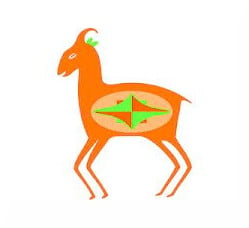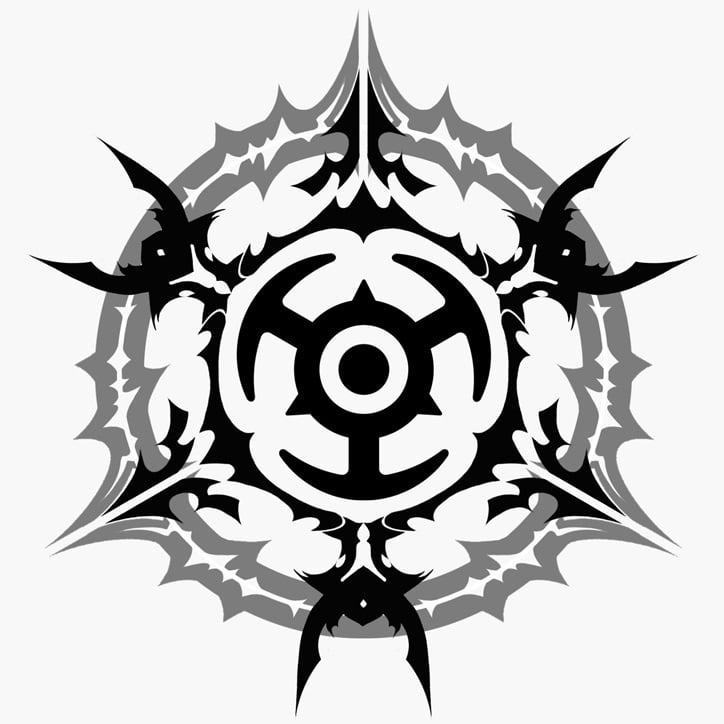I’d expect the shortest day of the year to also be the coldest, with the coldest season of the year spreading out equally on both sides of it.
Ever notice during the summer the hottest part of the day is usually around 3 or 4 in the afternoon instead of at noon? Same thing, just on the order of months instead of a day.
That seems to be specific to where you are
If the days start cooling down at noon for you, you’re closer to the outlier set than me.
It’s a timezones vs actual sun time thing. In Spain near me they are like 2 hours away from their actual sun time so you can even add that to the lag you said. I’m sure it’s the other way around somewhere in the world, specially in medium and big countries
That’s a little pedantic. The exact time isn’t really important, just that it is not exactly at midday, it’s a few hours after midday.
That’s the thing though. Spain’s time zone is so far ahead of where it should be, for most of the year the hottest part of the day really is around noon. When stupid-pretendy-time is in effect (which a quick google tells me is 7 months of the year), solar noon is at 10 am in Spain, which means clock noon is at 2 pm, roughly the hottest part of the day.
There’s also the fact that local factors have an effect. Closer to the equator, the hottest part of the day tends to be earlier. Humidity can have an effect, as can the amount of concrete and asphalt versus earth and trees.
I spent about a week in Toledo, Spain for a wedding a few years ago during the summer. We were taking siestas on our second day there and eating dinner at 10pm.
It was actually quite enjoyable operating on the Spanish time-conventions.
The thing is, the time zones aren’t necessarily related to the lifestyle. A siesta at 1 on the current clock is identical to a siesta at 11 on a more natural clock. But either way you have a siesta when the sun is near its peak.
Time zone doesn’t affect “midday”
Midday is when the sun is at its highest point. The hottest part of the day is pretty much always a few hours after midday.
Of course there are exceptions, there’s almost always exceptions for literally everything and it’s kind of useless pointing it out.
Midday is 12:00. If you want to refer to solar noon, call it solar noon.
To answer the original question, it’s because the earth is very large and retains the heat from warmer times preceding the solstice in the water bodies and the ground, like a buffer, so there is a lag time for things to lose that heat and get to the coldest air temps. As an analogy, if you heat up some rocks in the oven, then turn off the oven, the rocks will still stay hot for a long time and gradually cool off.
That’s what I thought. the atmosphere is a big slow-reacting sponge. The coldest day of the year is usually in early February. By that time the slow lengthening of daylight since the solstice starts to warm things back up.
This video sounded so much like a commercial I wasn’t even paying attention to the first 5-10 seconds
Get uBlock and SponsorBlock for YouTube my guy, it saves so much!
It’s a convention. And not one that everyone follows. In Australia we use meteorological seasons, which start on the first of the month. So today is precisely one third of the way through summer.
Because of what you said, I do think that the way we do it is better. It puts the solstice (the day literally called “midsummer”) closer to the middle of the season, and also makes more sense because it puts seasons aligned with the human calendar.
Ultimately, the 4 seasons are a human invention and we can choose where we put them.
Yup. “The map is not the territory” as Alfred Korzybski put it.
An old answer I saw said that Europe (where conventions originated) has a bigger lag in temperatures than North America has. We both lag and the lowest temps are commonly in Jan-Feb.
Why does it matter for Europe? Winter solstice is an astronomical event. Also probably practiced in China earlier.
Labeling it the beginning of winter is a cultural thing.
Two things because I’m not sure what you’re referencing. 1) We inherited a shit ton of European norms and terminology. 2) The cold weather in Europe has much more lag because of their geography. Large bodies of water, which Europe is surrounded by on 3 sides, smooths out and slows temperature changes.
I’m unclear what it has to do with Europe besides the cultural part because it’s a planetary event that cannot be affected by humans
Sigh. This is my last explanation and there are plenty of explanations in this thread. I’m taking small liberties to get the point across:
In North America it’s cold Dec to Feb.
In Europe it’s cold Jan to March. Europe has a bigger lag in cold temperatures because of their geography.
I always thought it was because in mid northern hemisphere latitudes where most people live, the coldest day of the year (i.e. “the middle of winter”) tends to be in early February, not the winter solstice.
This is a great question. I’ve always wondered this!
It doesn’t? Winter starts weeks before the solstice.
That article is just as useless as the comment it replies to, because it fails to acknowledge the fact that marking the start of the season with the solstice is only a convention that some places observe. Others do not.
Winter does not start on the same day everywhere.
There are three popular reckonings for the 4 season model. The meteorological seasons, astronomical seasons, and solar seasons. The solar season places the solstices and equinoxes in the middle of each season. The meteorological seasons are based on temperature but these days are aligned with the months with summer/winter (depending on hemisphere) starting at the start of December and ending on the last day of February. The model the US uses is the astronomical model of seasons and makes the least sense to me, it places the start of each season on the solstices and equinoxes which means that midsummer is actually the start of summer there.
The model the US uses […] places the start of each season on the solstices and equinoxes which means that midsummer is actually the start of summer there.
We do meteorological here in Australia so December to February style. I had no idea there were places that put the equinox as the start.
That said, dividing the year into 4 seasons has always seemed very reductive to me. Our local indigenous aboriginals describe the weather in 6 seasons. People who have spent a life time observing the weather in the course of earning a living can describe what changes in patterns to expect from month to month. Of course, this knowledge is only applicable locally.
Yeah the Sámi people of the Nordic countries have 8 seasons, so it is highly local how many seasons and when they change.
which country do you live in? I live in Noongar country, they also use 6 seasons and I think it is a much better system. The Noongar seasons are an ecological system based on changes in nature
Yeah noongar.
We do meteorological here in Australia so December to February style.
I think they’re from Australia.
In Australia, the term “country” can also mean which Aboriginal land you’re on. Sort of equivalent to an American saying which Native American tribe’s “nation” they’re in, I think.
Reading again, that makes much more sense, thanks!
Yeah, it’s actually extremely common here in Australia. Major sporting events and other special occasions are often opened with a “welcome to Country” ceremony, performed by an Indigenous Elder.
Smaller events, from the weekly City Council meeting to radio programmes to some Australian Twitch streamers, will often include an “acknowledgement of Country” made by a non-Indigenous person. A simple statement like “I would like to acknowledge the Yuggera and Turrbal people who are the traditional custodians of the land on which we are gathered, and pay respects to their Elders past, present, and emerging.”
Keep an eye out, if you’re interested, for the opening ceremony of the Brisbane 2032 Olympics. Or any other sporting events that might come to your attention that are located in Australia.
That’s interesting, indeed! I’ll keep an eye out!
Yeh, no shit… So am I. https://aiatsis.gov.au/explore/map-indigenous-australia
What do you mean when you say that the US uses this model and Australia uses that model? Who uses it and for what? In my country the government doesn’t tell us what season it is or what system to use. People just use whatever system they fancy and most likely it’s just based on gut feeling instead of a calendar day.
No one will look at you sceptically when you say “This is a cold winter” on a freezing November day, nor will the be confused if you say “What a nice spring day” on a sunny February afternoon.
People would 100% correct you if you use an alternative system.
There are three popular reckonings for the 4 season model. The meteorological seasons, astronomical seasons, and solar seasons
If there are 2 things I hate, it’s off by one errors.
There’s 3 ways to model 4 seasons. All 3 ways recognize there are 4 seasons.
This OCD horseshit is why we “needed” metric.
Not sure if it is technically correct, but I think of it like the momentum of Earth’s atmosphere. It takes a lot of momentum to alter the system. The days getting a little longer by a few minutes depending on latitude makes little difference. We are still dropping in average temps the further towards the poles.
Riding a bicycle everywhere for years in Southern California, this was something I would think about a lot on the commutes in the dark of winter, and the wind and rain patterns. Like here, I know if it will rain based on the wind direction alone. I only check the weather when I’m too lazy to go outside or something odd is happening. After the solstice there seems to be more turbulence that is added to the system. There is more of a back and forth between on an off shore flow patterns. It is our rainy season here, and we have nights get around 10°F cooler. This is when I break out my 40°F layers. On a bike, everything is still skin tight. I can shed some layers but don’t like to stop to do that. I have specialty gear for every 10°F of temperature drop. If I wear 40-50°F gear in 50-60°F temps, I will sweat like crazy and then freeze from being wet. I wear my coldest gear a lot less than I did 15 years ago, but I still haven’t needed it this year. I will in the months to come.
Most people are not connected to the weather and outside world very directly like this in the West. In my experience, the solstice marks the low point where I have around 6 weeks until things start getting better.
It’s a modern convention. In the Celtic calendar solstice marked the middle of winter and older Christmas carols mark Yule as midwinter. https://m.youtube.com/watch?v=1_R3GPkIDeM
Where I live we got green and brown
Seasons of Bergen, Norway:
December - February: Cold and dark and wet season. Stock up on antidepressants, good food, “Hygge”-paraphenelia, asthma medication and remain indoors.
March - mid-July: Cold and green season.
Mid-July: Summer!!!
Mid-July - August: “pretend it is still summer”-season. Yes, we can grill and drink beer in the garden dammit just put on an extra jacket.
September: Wet and windy season.
October - November: Soggy cold season. Shoes and jackets go to the Drying Rack, not on thr regular rack.
Damn, that sounds a lot like Don’t Starve Together seasons. How do you handle the human-size mosquitoes during the wet season though? 🤔
Remain indoors.
Seasons in Texas:
June 5-October 25th: fuck you it’s 100+° F / 38° C. Most non-native plants die if they receive direct sunlight all day. It’s 85°F / 30°C at night.
October 26th - December 10th: fuck you it’s 90° F / 32° C but also 40°F / 5°C in the morning; you’d better have 2 sets of clothes for the day
Dec 11th - Feb 28th: actually decent weather
March 1st - May 1: it’s getting hotter but also raining a lot so it’s muggy but the weather is still tolerable sometimes
May 2 - June 4: Hot and humid, sensory nightmare, air outside feels like your lungs have been filled with a damp blanket. 95+% humidity at all times.
Seasons of Lahore, Pakistan (imo):
- Mid-December to February: chilly weather, often between 4-15 degrees Celsius, pretty mild compared to the rest of the year
- March: first spring, plants are noticeably becoming more alive, flowers are blooming, but temperatures are rapidly increasing. Around this time I set my heat pump to cooling mode
- April to July: first part of summer, very dry, heatwaves start to happen. Temperature is around 28-40 degrees usually
- July to early September: second part of summer, around as hot as the first part but monsoons start to happen
- September: second spring, ofc similar to the first but temperatures start to drop.
- Mid-September to November: the smoggy season. Pretty moderate temperatures (10-25 degrees), but there is way too much air pollution. A lot of it is due to farmers burning their stalks around this time. I set my heat pump to heating mode around the latter half of this season
Why call it 2nd spring? I though the more used name is autumn
In the video, the creator (talking about the seasons where they live, in Southern Coastal California) states that instead of saying “spring” and “autumn”, they call both seasons “nice”, because they are indistinguishable. I’m using the same rationale, basically.
There are (at least) four different definitions of winter:
- Astronomical seasons are what you describe, and these are obviously based on astronomical events, for which the equinoxes and solstices are the perfect fix points. That the seasons start at these days is purely conventional, and in some times (roman empire) and places (Celtic calendar) people used these days as the center point of the season instead (also known as “Solar seasons”). Why those don’t match up with the actual temperature has already been explained in countless other replies.
- Meteorological seasons use a simple, month based approach, where winter is just December, January and February. That makes it easier for statistical usage but obviously is also just a man-made convention.
- The energy sector defines winter as the time of extended energy needs due to heating. Where I live, that’s defined as 1. of October - 31. of March, but for obvious reasons that’s highly dependent on where you are.
- Phenological seasons are a bit more what you’re looking for: They are based on biological events in indicator plants and a lot more complex than just being four fixed periods and only ever the same for small regions. Where I live, there are ten phenological seasons, winter starts when the English Oaks drop their leafs and ends with the blooming of the Common Hazle.
In other cultures there might be vastly different seasons. In many tropical countries you’ll only have the dry season and the monsun season.
I once again come to inform that “the start of winter” changes depending on where you are.
So in you case that is just how it lines up, but where I live the winter starts October 14th.











